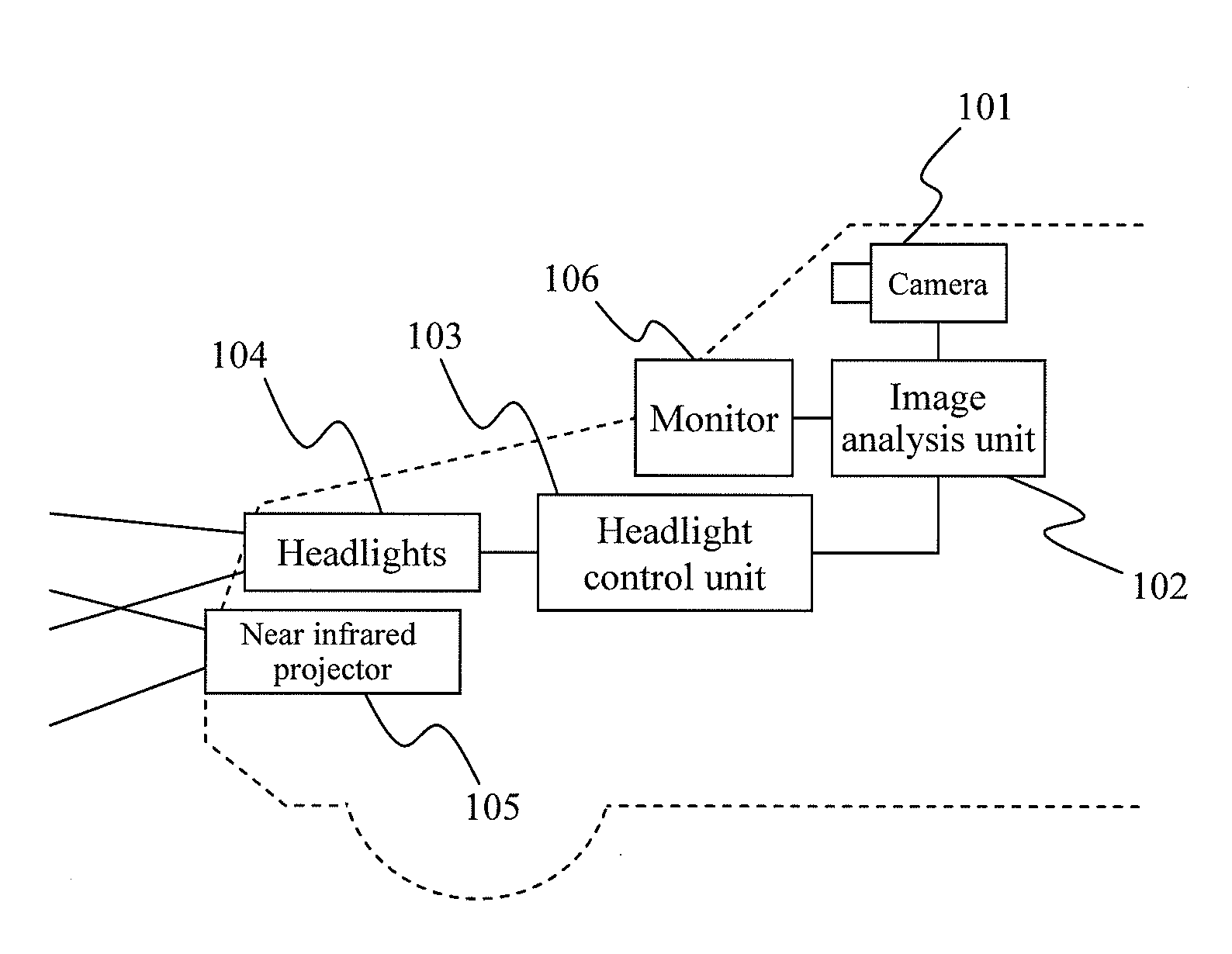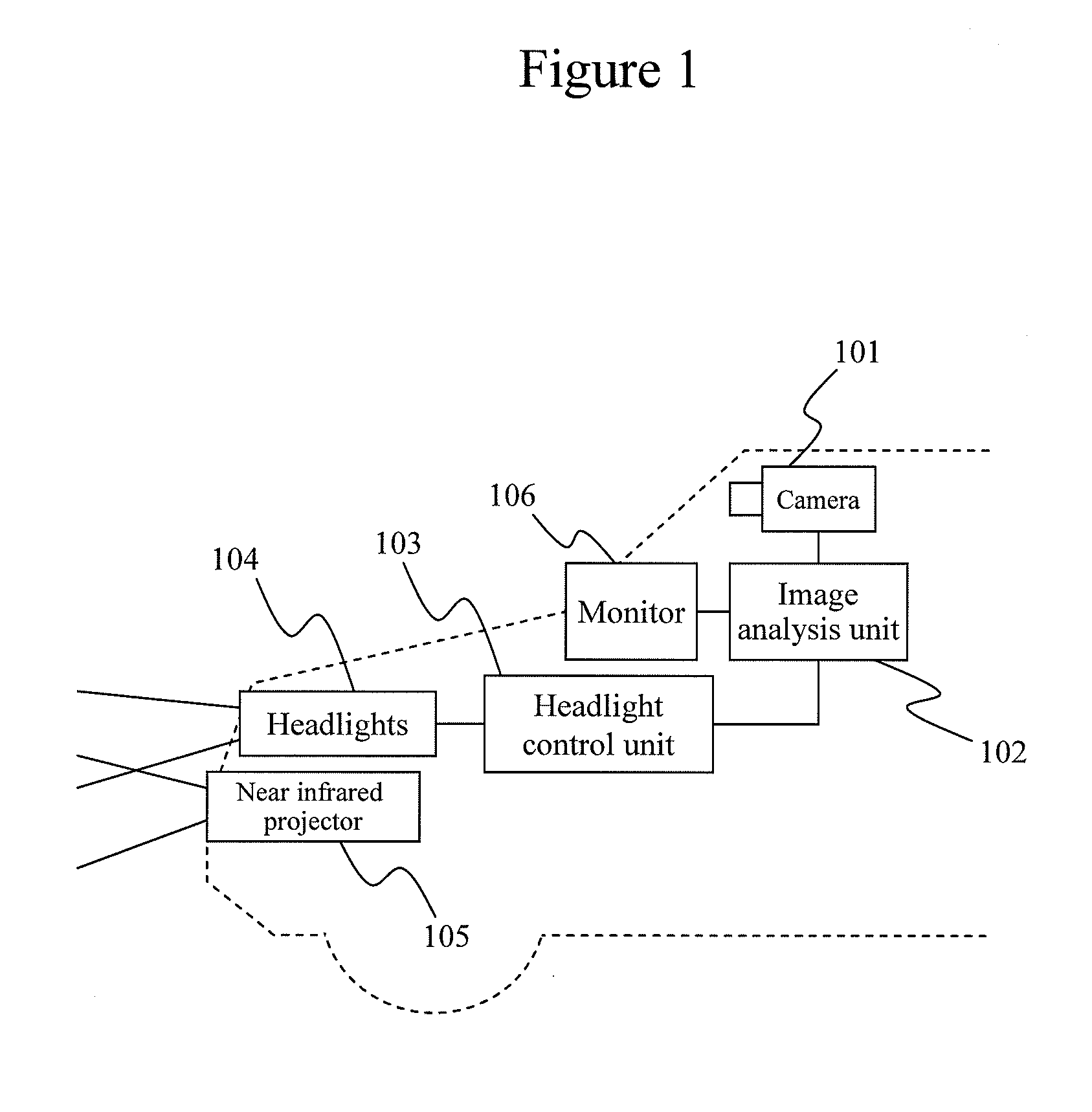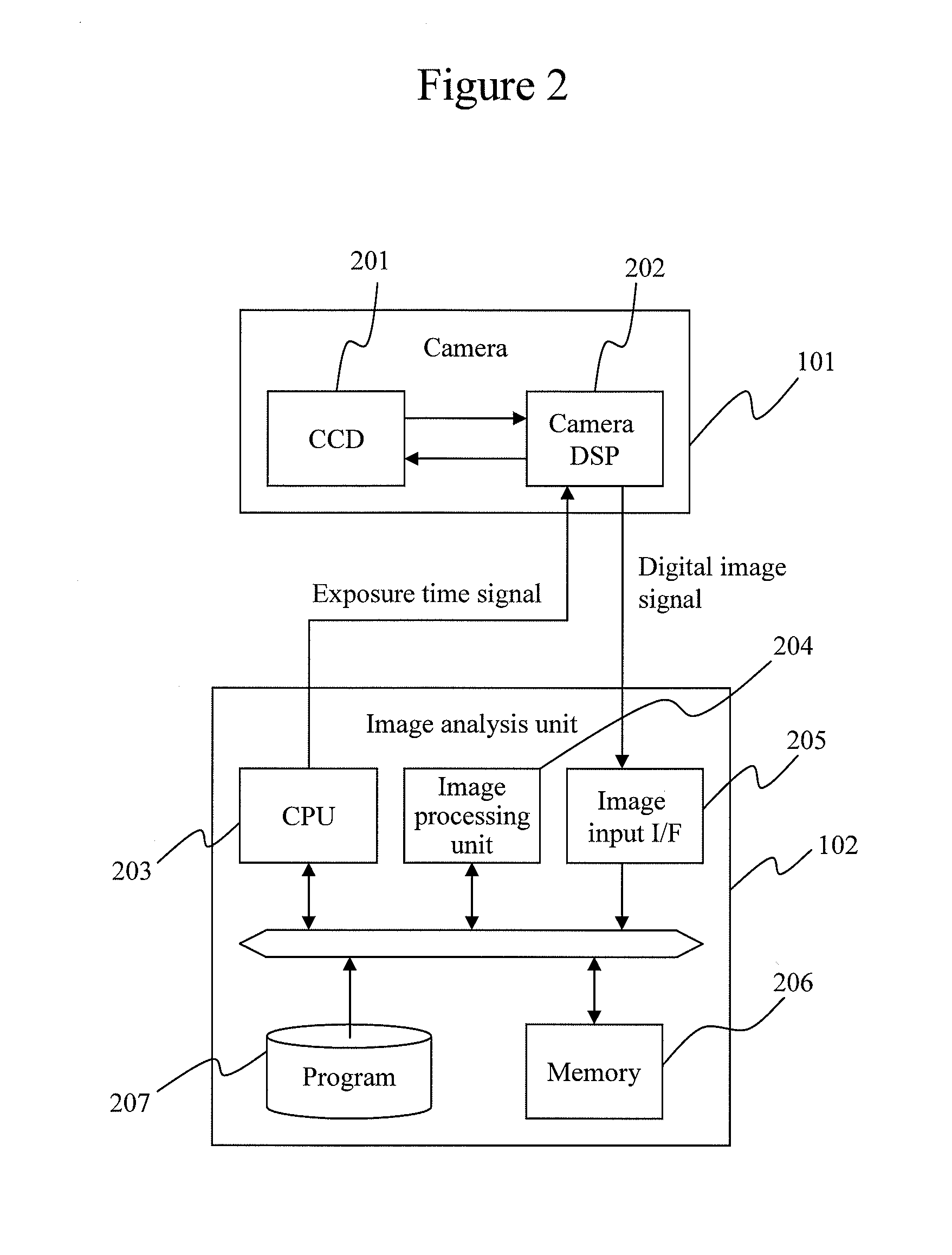Image Processing Apparatus
a technology of image processing and apparatus, applied in the field of image processing apparatus, can solve the problems of difficult to realize images with a single imaging device, and achieve the effect of reducing costs and high precision
- Summary
- Abstract
- Description
- Claims
- Application Information
AI Technical Summary
Benefits of technology
Problems solved by technology
Method used
Image
Examples
embodiment 1
[0027]FIG. 1 shows an overview of the overall configuration of Embodiment 1 of the present invention. A camera 101 is installed near the rear-view mirror so as to be able to shoot forward of the vehicle. A vehicle forward image taken by the camera 101 is inputted to an image analysis unit 102. The image analysis unit 102 performs image processing, and, by way of example, if there is a vehicle ahead, analyzes the distance to that vehicle. Based on distance information with respect to the vehicle ahead, a headlight control unit 103 calculates voltage amounts to be applied to high beams and low beams of headlights 104, and supplies the calculated voltage to the headlights 104. The illumination distance for the headlights is thus controlled based on the distance to the vehicle ahead.
[0028]Thus, since the object here is to control the illumination distance for the headlights, instead of the voltage amounts mentioned above, the headlight control unit 103 may also calculate, and supply, cu...
embodiment 2
[0055]FIG. 9 shows a flowchart of a process of Embodiment 2. In Embodiment 2, a color image is generated and transferred in place of the visible grayscale image in Embodiment 1. In Embodiment 2, by excluding colored light when strong light is received from something other than headlights, e.g., from a traffic signal, it is possible to completely eliminate any erroneous identification of it as being a headlight. In the case of color, the conversion to a YUV signal is performed using conversion equations, namely Equations 11 to 13 below.
Y=0.299R+0.587G+0.114B Equation 11
U=−0.169R−0.331G+0.500B Equation 12
V=0.500R−0.419G−0.081B Equation 13
[0056]With the exception of the points mentioned above, the remaining features of Embodiment 2 are the same as Embodiment 1, and descriptions will therefore be omitted.
embodiment 3
[0057]Embodiment 3 performs the exposure performed with the low-speed shutter in Embodiment 1 or Embodiment 2 once, and uses the result thereof for both visible color image generation and infrared grayscale image generation. FIG. 10 shows a flowchart of a process of Embodiment 3. Here, exposure is performed only once in step 1001. As a result, it is possible to reduce the transfer amount of image data, and to shorten the processing cycle.
[0058]With the exception of the points mentioned above, the remaining features of Embodiment 3 are the same as Embodiment 1 or 2, and descriptions will therefore be omitted.
PUM
 Login to View More
Login to View More Abstract
Description
Claims
Application Information
 Login to View More
Login to View More - R&D
- Intellectual Property
- Life Sciences
- Materials
- Tech Scout
- Unparalleled Data Quality
- Higher Quality Content
- 60% Fewer Hallucinations
Browse by: Latest US Patents, China's latest patents, Technical Efficacy Thesaurus, Application Domain, Technology Topic, Popular Technical Reports.
© 2025 PatSnap. All rights reserved.Legal|Privacy policy|Modern Slavery Act Transparency Statement|Sitemap|About US| Contact US: help@patsnap.com



